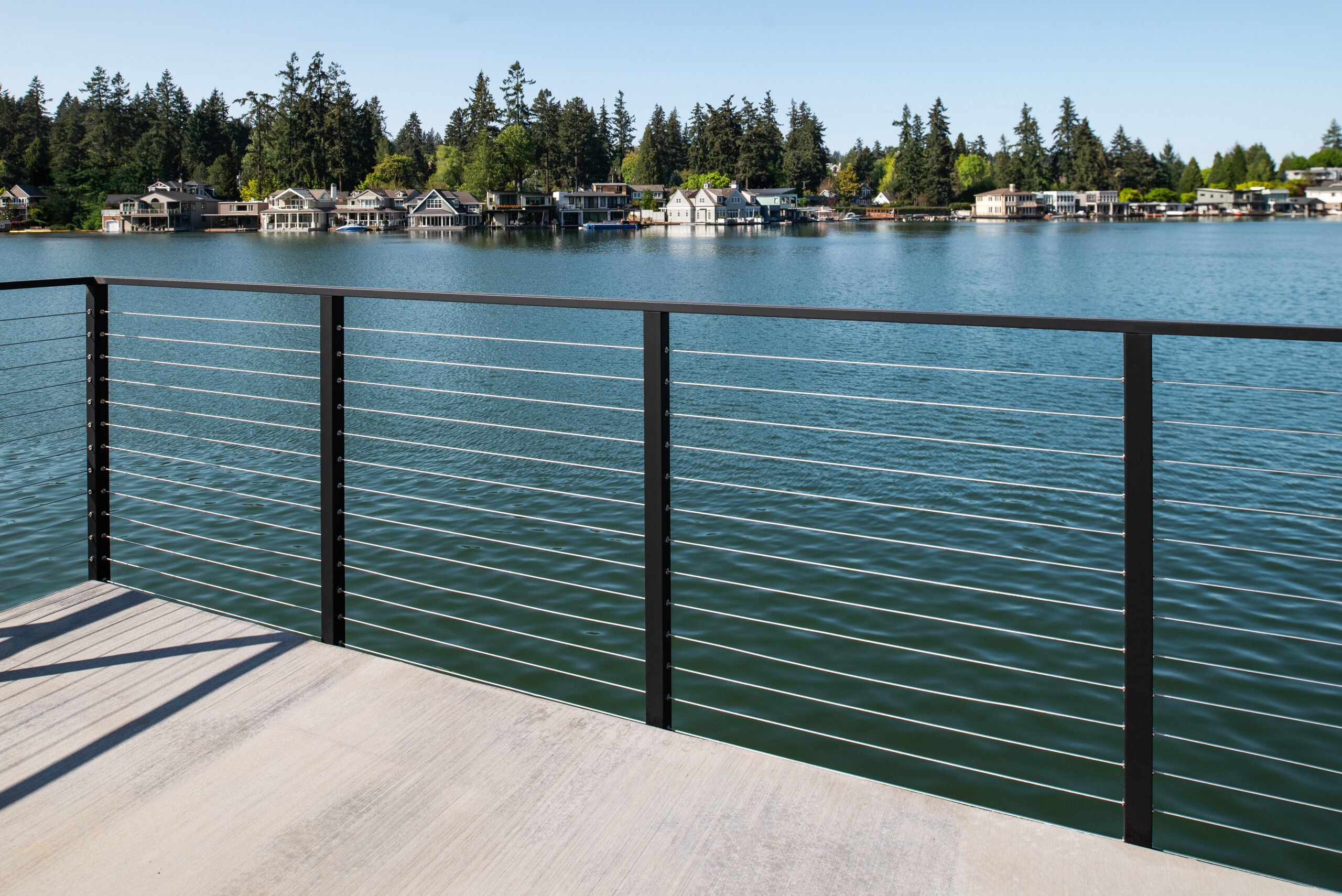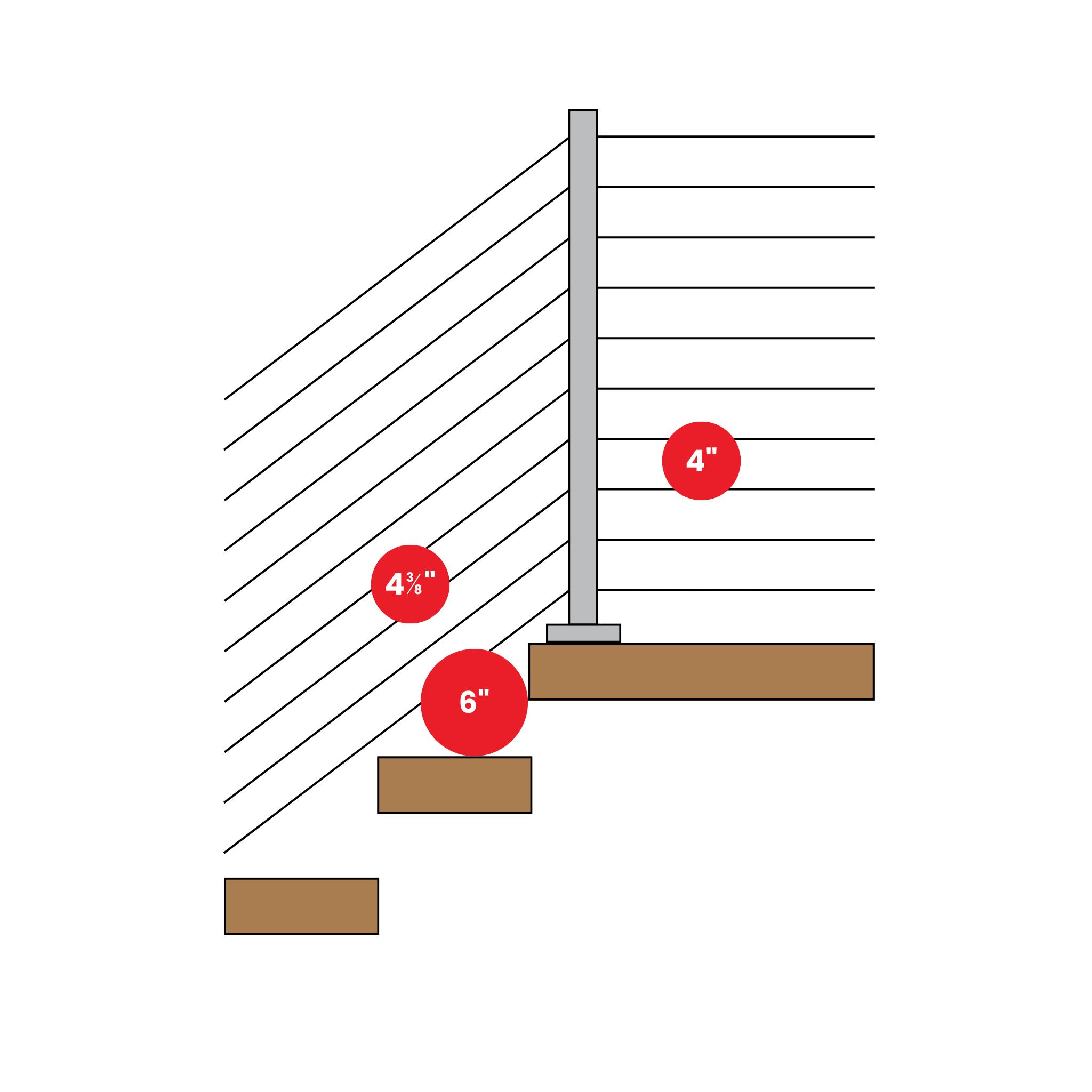
Know the Code: Cable Railing
A guide to height, spacing, and strength requirements.
Get to Know Your Cable Railing Code
When you’re installing cable railing on a deck, staircase, or balcony, the safest (and simplest) path is to build exactly to code. This guide distills the essentials: what applies, what to measure, how far to space things, and how Viewrail systems are designed to meet or exceed the rules.
Quick Definitions: Guard vs. Handrail
Guard (a.k.a. guardrail)
A safety barrier such as a railing along open edges like decks, balconies, landings, and stair sides, that prevents falls.
Handrail
The graspable rail you hold while going up and down stairs. It has its own height and usability rules.
One piece can do both
The top of a guard can also serve as the handrail on stairs if it meets certain handrail rules (see below).
Which Code Applies?
One‑ and two‑family homes
Most homes follow the International Residential Code (IRC).
Commercial buildings
Many multifamily projects and commercial buildings follow the International Building Code (IBC).
Local jurisdictions
State and local areas can amend either model (for example, requiring 42″ guards), so always check your local adoption and amendments before you finalize a design. For example, here is California’s Guardrail Code
For Reference: “Horizontal Railing Code” follows the same base guardrail requirements
Guard Requirements
Where guards are required
If there’s an open edge and the drop is over 30 inches anywhere within 36 inches (3 feet) of that edge, then you need a guard.
Residential guard height
Your guard must be at least 36 inches tall on level surfaces. On stairs, a guard is typically required when there are 4 or more risers, though some areas may require 42 inches — check your local code.
Top rail vs. handrail
The top of a guard may double as the handrail if it meets handrail rules.
Note: Local jurisdictions may require taller guards (e.g., 42 inches). When in doubt, design to 42 inches to satisfy the strictest common requirement, or verify with your inspector.
Handrail Requirements
Height
The height of the handrail needs to be between 34 and 38 inches measured vertically from the line connecting the stair nosings (imagine a line that grazes the front edge of each tread — that’s the nosing line).
Continuity
Handrails must be continuous for the full flight, without gaps.
Returns
The ends of the handrail need to return to a post, guard, wall, or safety terminal to prevent snags.
When required
On stairways with 4 or more risers.
Opening Rules
Your guard (guardrail) must block certain sphere sizes through any opening:
Railing Infill
The space between posts (such as cables, rods, or panels) must block a 4-inch diameter sphere.
Stair Guard Infill
The space between posts on a stair guard (like a railing) must block a 4 3/8-inch sphere.
Stair triangle
The triangular gap formed by the tread, riser, and bottom element must block a 6-inch sphere.
Why Viewrail uses 3-1/8″ cable spacing (on center)
With correct tensioning, 3-1/8″ spacing helps ensure deflection does not allow a 4″ sphere to pass through.

Strength Requirements
Guards and handrails must withstand specified forces without failing (per IRC/IBC):
Top rail/guard/handrail
Should withstand 200 pounds of force in any direction at the top.
Infill
Should withstand 50 pounds of force spread over a 12 inch × 12 inch area.
Engineer’s perspective
Load compliance is about the system as installed rather than individual components. Always install per Viewrail instructions and use the specified fasteners/anchors for the surface you’re attaching the system to.
Post and Cable Spacing
Post spacing (typical)
For aluminum or steel post systems, plan on putting your posts 4 feet (48 inches) apart on center. Tighter spacing limits cable deflection (bending) and simplifies tensioning but isn’t necessary.
Wood systems
Use a structural (load-bearing) wood post every 8 feet with intermediate posts 4 feet between structural posts.
Cable spacing
3-1/8″ on center through posts helps maintain compliance with the 4-inch sphere rule when correctly tensioned.
Proper Tensioning
Maintaining even tension keeps openings safe and up to code.
Pro tips:
- Measure precisely — “measure twice, cut once.”
- Make double crimps where specified.
- Start tensioning with the middle run (length between two posts) of cable, alternate up and down, then finish at the top and bottom runs.
- Don’t over-tension — too much force can bow the top rail.
- Re-check tension after temperature swings and again after the first few weeks.
Ladder Effect
The IRC does not ban horizontal guards because of a so‑called “ladder effect,” a concern that horizontal cables or rods create a structure like a ladder that can be climbed. Some places publish local guidance, so always double check before installing your railing.
Compliance and Testing
Floating stairs
Viewrail’s FLIGHT floating stair system is covered by ICC Evaluation Report ESR‑4797 (2025–2027). It addresses how attached guards/handrails must satisfy opening rules and loads when installed per the report and instructions.
Cable and rod systems
Viewrail cable and rod infill systems are engineered to meet and often exceed applicable IRC/IBC load intent when installed according to Viewrail instructions and layout guidance on this page.
Need documentation for your permit set? Contact us for project‑specific drawings and spec sheets.
Frequently Asked Questions
Yes. Cable railing is safe when you meet guard height, opening, and structural load requirements and follow proper tensioning and spacing.
The IRC residential minimum is 36". Some jurisdictions (and many commercial/IBC projects) require 42." Always verify locally.
A guard prevents falls at open sides. A handrail is the graspable support used to ascend/descend stairs; it must be 34–38" high, continuous, and return to a wall/guard/post.
Plan 4 ft on center for best performance. Closer spacing isn't necessary, and adds both cost and work, though it further limits cable deflection, especially on stairs and long runs.
It helps ensure that, after tensioning, deflection still blocks a 4" sphere.